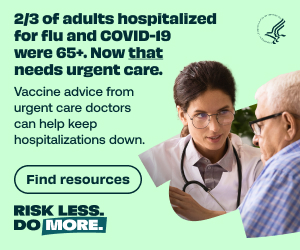To avoid liver failure in most serious cases, start NAC treatment immediately.
Acetaminophen or paracetamol is widely used globally for pain relief and fever. It is also combined with other medications in multi-symptom formulations for this purpose. Due to its effectiveness and relative safety, it is sold over the counter and is readily available.
However, this common pain remedy is not without its dangers, as acetaminophen toxicity is a common overdose seen in the ED. Toxicity occurs when the regular metabolic pathways (sulfation and glucuronidation) are overwhelmed and toxic metabolites are generated in the liver through cytochrome P450 CYP2E1 to generate NAPQI. This highly reactive metabolite depletes detoxifying glutathione to cause centrilobular necrosis in hepatocytes leading to liver failure. N-acetylcysteine (NAC) repletes liver glutathione to conjugate with NAPQI aiding in hepatic recovery.
Four Clinical Stages
Acetaminophen toxicity has four clinical stages, although these stages are not absolute. In Stage I patients may be asymptomatic or have nausea, vomiting and abdominal pain. In Stage II injury continues, but the patient could have some resolution in symptoms. Stage III there is worsening liver injury and symptoms such as abdominal pain, nausea, vomiting, confusion, jaundice, and multiple organs fail. If a patient survives past Stage III, they will reach Stage IV, which is called the recovery phase, where hepatic function eventually recovers and symptoms slowly improve.
Are all acetaminophen overdoses created equal? A straight-forward case of acute acetaminophen toxicity is a patient who took enough acetaminophen, and presents to the ED within eight hours with an acetaminophen level over the treatment line on the Rumack-Matthew nomogram. Intravenous N-acetylcysteine (NAC) is infused at 150 mg/kg IV over an hour, then 50 mg/kg IV dose for the next four hours, and then 100 mg/kg IV for 16 hours. Liver function studies determine if more treatment is needed. See the Rumack-Matthew nomogram to determine acute toxicity.

Anaphylactoid reaction is the most serious adverse reaction to IV NAC. Stop the NAC infusion immediately, give antihistamines for rash and itching, and treat bronchospasm with beta agonists, if needed. Once the acute reaction has subsided, a slower infusion rate will decrease the chance of reoccurrence. Most anaphylactoid reactions occur during the one hour bolus infusion of 150 mg/kg.
How about oral NAC? Oral NAC has fallen out of favor because it smells like rotten eggs. Even adding NAC to a palatable drink will often make that drink taste nasty. Additionally, the patient must consume this “tasty” concoction every four hours at 140 mg/kg for 18 doses minimum. Now that’s three days of delightful treatment. Add in a somewhat altered patient and that makes a miserable shift for a nurse.
That’s straightforward acetaminophen toxicity treatment. But wait — how about the other types of acetaminophen ingestions we often see in the ED? Check out these examples:
Late Presenter
Edwin, a 23-year-old man, comes to the ED after he took a whole bottle of acetaminophen two days ago. He is nauseated, vomiting, and has abdominal pain. His lab studies are:

Plotting Edwin’s level out reveals he is beyond the treatment time on the nomogram. But, you say, he has a negative acetaminophen level. Is it too late to treat? No, start NAC treatment immediately. Edwin has late acetaminophen toxicity as evident by the elevated PT/INR, liver enzymes especially the AST, and his overall symptoms. Also, he has acute kidney injury. The kidneys have P450 activity, and so are affected by acetaminophen generated toxins.
Bad Timing
You are enjoying a relaxing morning in the ED when Nicole, a 19-year-old woman, shows up to the emergency department at 9:45 AM after she took several different pills and drank a lot of alcohol last night. She says she might have taken them before sunset. Her laboratory studies at 10:00 a.m. are:

This is a case of unknown time of ingestion. You can only estimate the time of ingestion. Sunset occurs around 7 p.m. Using this time will help plot out Nicole’s level on the nomogram at 15 hours and acetaminophen level of 33, which is over the treatment threshold. You start her on NAC and admit her to the hospital.
What if she was unable to share any history? The nomogram may assist in determining when the minimum time of ingestion would be for toxicity to occur. An example would be if Nicole took acetaminophen at an unknown time and her acetaminophen level was 55 mg/L. Plotting it out on the nomogram she could have taken a toxic ingestion at least nine hours before the lab was drawn. Further history could determine whether NAC treatment should be started. If no history was available, start treatment.
Chronic Ingestion
Elaine, a 45-year-old woman, has a headache that does not seem to go away. She has taken ibuprofen several times, but it does not seem to work. She started to take extra strength acetaminophen four at a time every four hours, which seems to help but now she has vomiting, stomach pain and jaundice. Elaine has finished a 100 count bottle in four days. Her last dose was 12 hours ago.

The patient has chronic acetaminophen toxicity, so NAC is indicated. The nomogram is not helpful in this case since it was designed for a single ingestion. Based on the laboratory studies this patient has hepatic dysfunction with evolving liver damage. NAC may be helpful in these cases even though the ingestion occurred over a period of time. Glutathione stores are depleted, so replacement would assist in liver recovery.
Bottom Line
The Rumack Matthew nomogram is used for single acute ingestions of acetaminophen to determine toxicity and treatment with NAC. Determining when to treat acute toxic acetaminophen ingestion is straightforward if the history and laboratory results indicate it. Difficulties occur when an element of uncertainty appears. If the time course or history is in doubt, treatment with N-acetylcysteine should not be delayed. The benefits of treatment outweighs the risks of missed acetaminophen liver injury that may ultimately lead to liver failure. Toxicology consultation or calling your regional poison center can always assist in acetaminophen toxicity.
One Final Pearl
Here’s one final tip: Order the first dose (150 mg/kg) and the second dose (50 mg/kg) in the ED, so the infusion continues while the admitting team has time to settle the patient on the ward.







